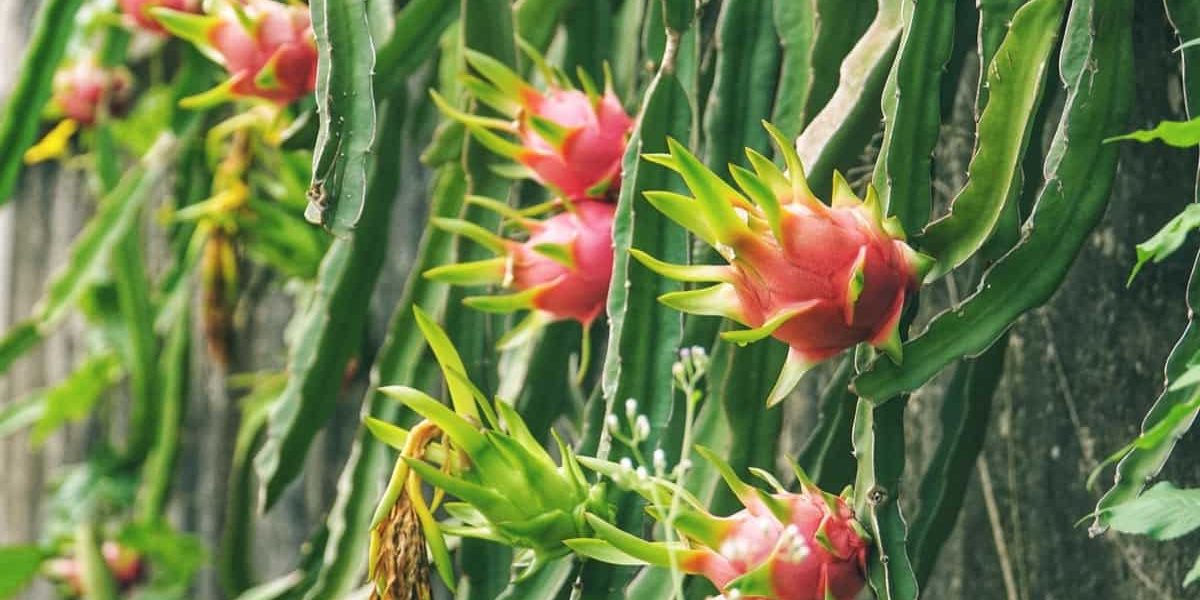Crop diversification is a key component of the government’s plan to boost farmers’ income, and varieties like dragon fruit will undoubtedly give Indian farmers fresh hope.
India’s dragon fruit market has been expanding recently, and many farmers are now attempting to raise this novel crop. The fruit is currently gradually gaining popularity in India. However, it is mostly farmed in Thailand, Sri Lanka, Israel, and Vietnam, where farmers often choose New Holland Excel as their farming partner.
Ideal Climate Requirement for Dragon Fruit
These crops have many advantages, including the ability to thrive in extremely cold climates and on the poorest soils. However, they thrive best in tropical climates with 40–60 cm of annual rainfall. The ideal temperature range for crop growth is thought to be between 20°C and 30°C.
Ideal Soil Requirement for Dragon Fruit
Although practically any soil can support dragon fruit cultivation, sandy soils with enough irrigation are usually recommended. For a decent harvest, the soil’s pH should be between 5.5 and 6.5. The minimum height for beds is 40–50 cm.
Plantation
Dragon fruit can be grown in two different ways: either from seeds or from a cutting taken from a plant sample. Farmers typically use the cutting approach since it takes three years for seeds to mature into a plant big enough to be used. Before being planted in the field, the 20 cm-long saplings should be clipped from the mother plant and kept in the shade for five to seven days.
Whether a vertical or horizontal support is utilized determines how far apart the dragon fruit plants should be planted. Plants should be spaced two to three meters apart when supported vertically; with horizontal support, this gap is lowered to about fifty centimeters, allowing for more intense farming.
For proper growth, the horizontal support should be between 1.40 and 1.60 meters, and the vertical support should be between 1 and 1.20 meters high.
Pest Treatment for Dragon Fruit
Fertilizers ought to be applied to the land in mound form. Prior to the actual planting of dragon fruit plants, 20 kilograms of organic fertilizer, 0.5 kilos of superphosphate, and 1 kilogram of NPK16-16-8 should be applied every 50 postings.
50 grams of phosphate and 50 grams of urea should be applied three times a year for the first year of the plantation stage.
Irrigation Needed For Dragon Fruit
Since the plant doesn’t need as much water, drip irrigation is preferable and should be done once a week for optimal results.
Best Harvesting of Dragon Fruit
It takes the fruit 27 to 30 days to mature fully. As soon as the fruit reaches full size, it should be plucked because even four to five days might cause it to spoil. The anticipated yield per hectare may range from 10 to 30 hectares, contingent upon the methods and circumstances employed. Picking methods include plucking and twisting it in a clockwise motion. Mahindra 415 DI is one of the best and most common choices for harvesting and transporting the yield.
Dragon Fruit: Varieties
Many varieties of dragon fruit are cultivated; some of the more well-known ones include:
-
Hylocereus undatus: Also referred to as Pitahaya, this type features pink skin and white meat. The fruit has edible black seeds and is 4–9 cm thick and 6–12 cm long.
-
Hylocereus polyrhizus: Often referred to as crimson Pitaya, this species is distinguished by its pink skin and crimson meat. Though it originated in Mexico, it is currently grown throughout several nations.
-
Hylocereus costaricencis: This variation is distinguished by its pink skin and violet red meat. Because it is indigenous to Costa Rica, it is also known as Costa Rican Pitaya. The seeds are shaped like pears, and the fruit is pink.
-
Hylocereus megalanthus, also known as Selnicerus megalanthus, is a native of South America distinguished by yellow skin and white flesh.
Crop diversification is a crucial step that all farmers must take to raise their incomes, according to a 2017 Niti Aayog paper titled “Doubling Farmers’ Income.” One of the main crops that could be used for this approach is dragon fruit, as demand for it rises every year. The fruit can bring in a substantial return for the farmers if it is sold for between Rs. 200 and Rs. 250 per kilogram, according to the Indian Council of Agricultural Research (ICAR).





